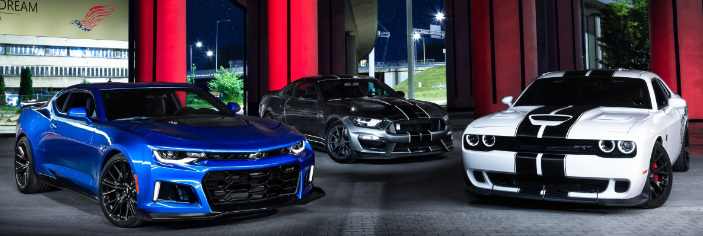The Chevrolet Camaro is an iconic muscle car that has been a staple of American culture since its debut in 1966. The Camaro has undergone remarkable transformations over the decades, from the classic first-generation models to the modernized versions of today. In this guide, we explore the Camaro’s impressive history, sharing all the information you need to know about the different Camaro years and uncovering the muscle car’s evolution.
What Camaro Years to Avoid Buying?

Strong>Camaro Years to Avoid: The Chevy Camaro has been a beloved muscle car for generations, but some model years can be less reliable than others. This guide explores the Camaro years to avoid, helping you make an informed decision when buying a used Camaro. We identify the classic models that are prone to costly repairs and explain why they should be avoided. We also discuss the modern versions of the Camaro and share the latest information on their reliability.
👀Look at this: Buick Verano Years To Avoid
First Generation: 1966-1969
The first-generation Camaro was introduced to the US market in 1966 and quickly became an American classic. This generation of Camaro was characterized by its iconic styling, with a long hood, short rear deck, and distinct features like the split grille. While the car was praised for its power and performance, the first-generation models from 1966 to 1969 are known to have several issues, including faulty wiring and cooling systems. The electrical problems can be challenging to diagnose and cause several issues, making these Camaro years to avoid if you’re looking for reliable transportation.
Second Generation: 1970-1981
The second-generation Camaro was produced from 1970 to 1981 and was an immediate success. This generation featured a number of upgrades, including a more powerful engine, improved suspension, and more modern styling. It was also the first Camaro to feature a hatchback body style and the first to offer a diesel engine. While the second-generation Camaro is considered one of the most reliable generations, it is still prone to some common issues, including steering problems and transmission failure.
Third Generation: 1982-1992
The third-generation Camaro was produced from 1982 to 1992 and is considered one of the most successful generations. This generation of Camaro was characterized by its modern design, with a sleek body and improved performance. This generation was also the first to offer a convertible model. While the third-generation Camaro is generally considered reliable, it is known for having electrical and engine issues, making these Camaro years ones to avoid if you’re looking for trouble-free driving.
Fourth Generation: 1993-2002
The fourth-generation Camaro was produced from 1993 to 2002 and is considered the most technologically advanced generation. This generation featured a number of upgrades, such as improved aerodynamics, a more powerful engine, and a more modern interior. While these Camaros are more reliable than the earlier generations, they are known for having wiring and suspension problems. For this reason, it’s essential to be aware of these issues when shopping for a fourth-generation Camaro.
Fifth Generation: 2010-2015
The fifth-generation Camaro was introduced in 2010 and is considered one of the most reliable generations. This generation features modern styling, more aggressive looks, and improved performance. While the fifth-generation Camaro is considered reliable, it is known to have suspension and electrical issues, making these Camaro years one to be aware of when shopping for a used Camaro.
Key Takeaways From Camaro Years To Avoid
- First-generation Camaros from 1966 to 1969 has known electrical issues and cooling system problems.
- Second-generation Camaros from 1970 to 1981 are generally reliable but may have steering and transmission issues.
- Third-generation Camaros from 1982 to 1992 is known for having electrical and engine complications.
- Fourth-generation Camaros from 1993 to 2002 are more reliable than earlier generations but have wiring and suspension problems.
- Fifth-generation Camaros from 2010 to 2015 are considered reliable but may have suspension and electrical issues.
When shopping for a used Camaro, it’s essential to be aware of the potential issues associated with different generations. While the fifth-generation Camaro is generally considered reliable, the first, second, third, and fourth generations are known to have a range of issues, including faulty wiring, cooling systems, steering problems, transmission failure, and electrical and engine complications. By understanding the potential issues of each generation, you can make an informed decision and find a Camaro that will provide reliable transportation for years to come.
🚀Recommended article: Dodge Nitro Years To Avoid
Finding the Right Camaro for Your Needs
When it comes to finding the right Camaro for your needs, it’s essential to understand the potential issues associated with different generations. Knowing which Camaro years to avoid can help you find a reliable model that will provide you with years of trouble-free driving. By understanding the potential problems and researching the different generations of Camaros, you can make an informed decision and find the perfect car for your lifestyle.

